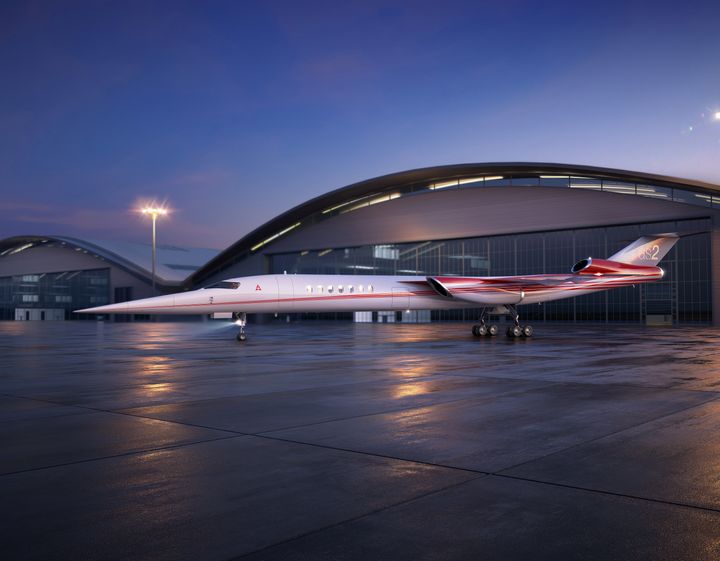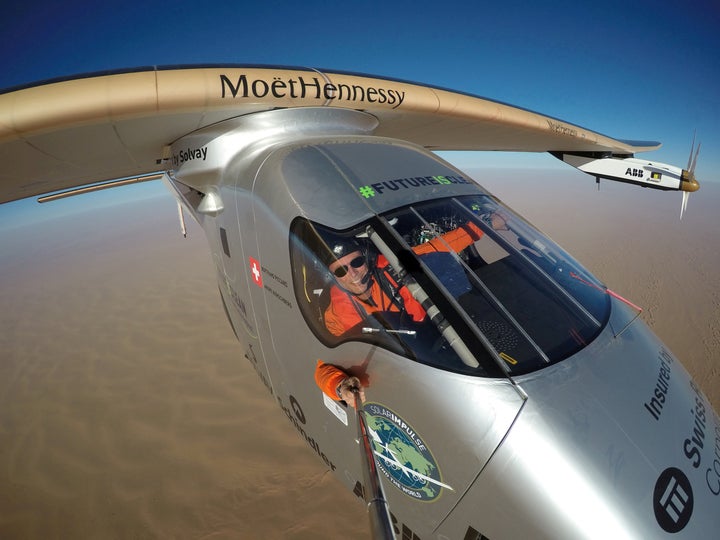
Fifteen years after the last Concorde flew, a new fleet of up to 2,000 supersonic business jets is in the works to ferry wealthy travelers around the world. The planes are expected to hit the runway in the next decade, but the climate change alarms are already going off.
President Donald Trump, of course, has hailed the supersonic revival as an example of the “Great American Spirit.” NASA dropped a $247.5 million contract on Lockheed Martin to build a quieter engine capable of breaking the sound barrier.
Climate advocates, meanwhile, are pointing to a new report, released Tuesday by the nonprofit International Council on Clean Transportation, that offers heavy criticism of the next generation of ultra-fast business jets.
The ICCT, which uncovered the Volkswagen diesel emissions scandal, warns that increased emissions from the new jets risk “large environmental consequences.” Its report concludes that the planes will burn five to seven times more fuel than normal aircraft and break United Nations-set carbon dioxide emissions limits for aircraft by 70 percent.
“People should be worried,” Daniel Rutherford, one of the report’s authors, told HuffPost. “We know that even without these supersonic jets, emissions from international aviation are expected to triple by 2050.”
Rutherford said he had seen estimates that by then, domestic and international aviation could account for about a quarter of the global carbon budget envisioned under the Paris climate change agreement.
“We might just be looking at the tip of the iceberg here,” he said.
Billions of dollars are reportedly being invested in new supersonic designs by U.S. startups such as Boom, Aerion and Spike, with predictions that some 1,000 to 2,000 of the futuristic business jets could be flying by 2035. Aerion told the site Climate Home News that it sees a market for 600 supersonic planes ― which would be focused on a very small and wealthy niche: those prepared to spend thousands of dollars to shave a few hours off their trans-oceanic flight times.
The small size of the potential consumer base serves to highlight the environmental issues. As Bill Hemmings, aviation director of the Brussels-based Transport and Environment think tank, said: “The ICCT report suggests that even a small fleet will do enormous damage to the climate. Is that publicly acceptable for a very modest decrease in flying time for 0.1 percent of the flying population?”
Or as Hemmings put it more sharply: “Why should a small segment of the population be exempted from the Paris agreement just because they want to travel faster?”

Supersonic commercial flights ― which travel faster than the speed of sound ― have been grounded since 2003, when poor passenger numbers and high costs led to the withdrawal of the Concorde jet fleet from service.
It was the crash of an Air France Concorde in Paris, killing 113 people, that sparked a chain of events ending in the jets’ retirement. But public concerns about their ear-splitting sonic boom and take-off noise had already merged with anxieties about nitrogen dioxide pollution and climate change.
Supersonic jets emit far more carbon dioxide than traditional planes because of their heavier weight and the consequent amount of fuel needed to take off and break the sound barrier. Those emissions of carbon dioxide and water vapor take place at 60,000 feet, around double the altitude of a normal aircraft. That affects the balance between the sunlight that reaches earth and the energy reflected back into space, in a process known as “radiative forcing” that may dramatically boost global warming.
Now the ICCT report suggests just how significant the jets’ carbon emissions could be.
Brad Schallert, deputy director of the World Wildlife Fund U.S., said, “It’s quite daunting that supersonics could have five to seven times the emissions of subsonic aircraft, when we need to reach zero emissions this century for a safe climate future.”

International aviation is one of the fastest growing sources of emissions. The sector emitted about 850 million metric tons of carbon dioxide in 2015, roughly the same as Germany’s total national contribution.
To put it another way, airplanes are responsible for more than 2 percent of global greenhouse gas emissions. When radiative forcing is considered, their contribution to global warming has been pegged at 5 percent.
But there are no meaningful global emissions regulations yet for supersonics and none seems likely until the new prototypes have been tested and built.
By then it may be too late, according to Hemmings. “The manufacturers now have Trump’s support and they’re pushing for quick certification from the FAA [the Federal Aviation Administration] so that they can fly to the E.U.,” he told HuffPost.
The flights might be stopped by regulation from the International Civil Aviation Organization, the United Nations body that spelled out carbon dioxide limits for airplanes. But the ICAO can’t write regulations on supersonic jets without the manufacturers’ data. And that information may not arrive until after a powerful head of steam has built up to support the planes.
“ICAO is on the job,” Hemmings said, “but it is going to take quite some time and the manufacturers are in a hurry. They want to get their planes up and running before ICAO gets its job done.”
Early rumblings of a supersonic clash between the U.S. and Europe were felt last week, amid a reported U.S. attempt to weaken global noise standards to smooth the way for the jets. (Sonic booms and noise created by the Concorde’s take-offs and landings were so severe that in 1973, the FAA banned supersonic travel over U.S. territory.)
David Whiteley, communications director for the trade group Airports Council International, told HuffPost, “Airports around the world have a strong record of working with communities to limit impacts on the local environment. That needs to continue and it needs to be in the minds of the aviation industry. As supersonic jets are developed, they should not be noisier or more polluting than their subsonic counterparts.”
Electric and hybrid aircraft, as well as innovative technologies such as power-to-liquid low-carbon fuels, are more deserving of investment than these jets, Schallert argued.
As for any self-styled green entrepreneurs getting behind the new planes ― think Richard Branson, who has backed the supersonic comeback as “the next big thing” ― Schallert added, “You cannot speak from different sides of your mouth on aviation’s climate impact.”
For more content and to be part of the “This New World” community, follow our Facebook page.
HuffPost’s “This New World” series is funded by Partners for a New Economy and the Kendeda Fund. All content is editorially independent, with no influence or input from the foundations. If you have an idea or tip for the editorial series, send an email to thisnewworld@huffpost.com
